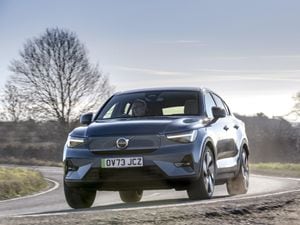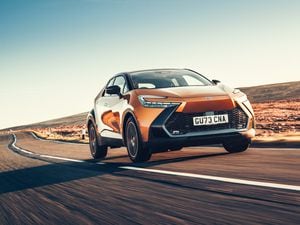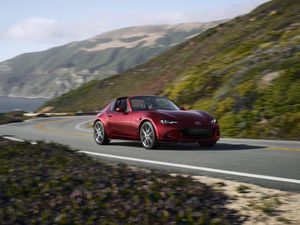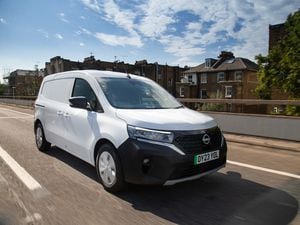UK drive: The Mercedes C-Class does everything you’d want an executive saloon to do
Mercedes has updated its popular C-Class for 2018. Here, Jack Evans drives it in C200 form to see how it copes on UK roads
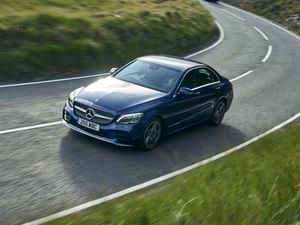
What is it?
The Mercedes C-Class is one of the most popular premium compact saloons on sale, going up against the likes of the Audi A4 and BMW 3 Series. In fact, it’s Mercedes’ best-selling model – the German manufacturer registered 46,000 of them in 2017 alone. To keep things current, the C-Class has been refreshed for 2018, ensuring it remains competitive against several capable rivals. We’re trying it here in C200 form, which uses a 1.5-litre petrol motor and something called EQ Boost technology – though we’ll look at this in a little more depth later on.
What’s new?
The 2018 C-Class has been, as we mentioned, updated with a variety of new functions and touches to keep things fresh. In AMG Line, as our test car was, you get a full exterior body styling package, heated sports seats and 18-inch alloy wheels.
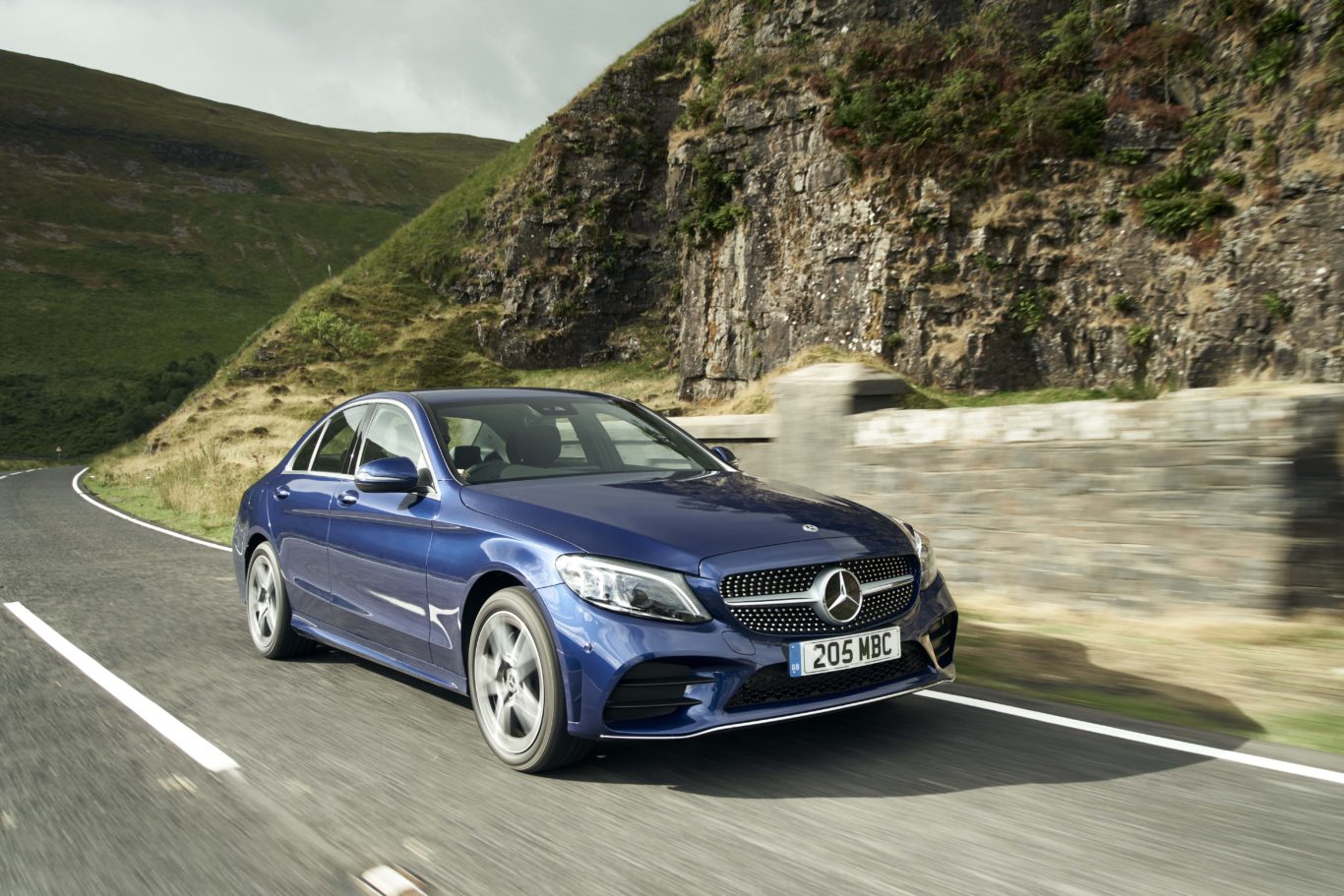
The biggest change here is the inclusion of a 10.25-inch infotainment screen, which is superbly clear and elevates the look of the cabin. This can be combined with the optional 12.3-inch digital cockpit screen to create a really good-looking system – though not quite as pretty as the fully widescreen version you’ll find in E- and A-Class models. It also costs £2,795 extra, and has to be specified as part of Mercedes’ ‘Premium package’.
What’s under the bonnet?
As we mentioned, this C200 uses a 1.5-litre turbocharged petrol engine to send to – in this case – all four wheels though a nine-speed automatic transmission. It’s also available with rear-wheel-drive. Peak power output is 182bhp, and you get a useful 280Nm of torque too. Emissions are decent at 148g/km of CO2, and Mercedes claims that you’ll get 53.3mpg on the combined cycle. Interestingly, the C220d (the most popular drivetrain), returns a claimed 61.4mpg combined and emits 121g/km.
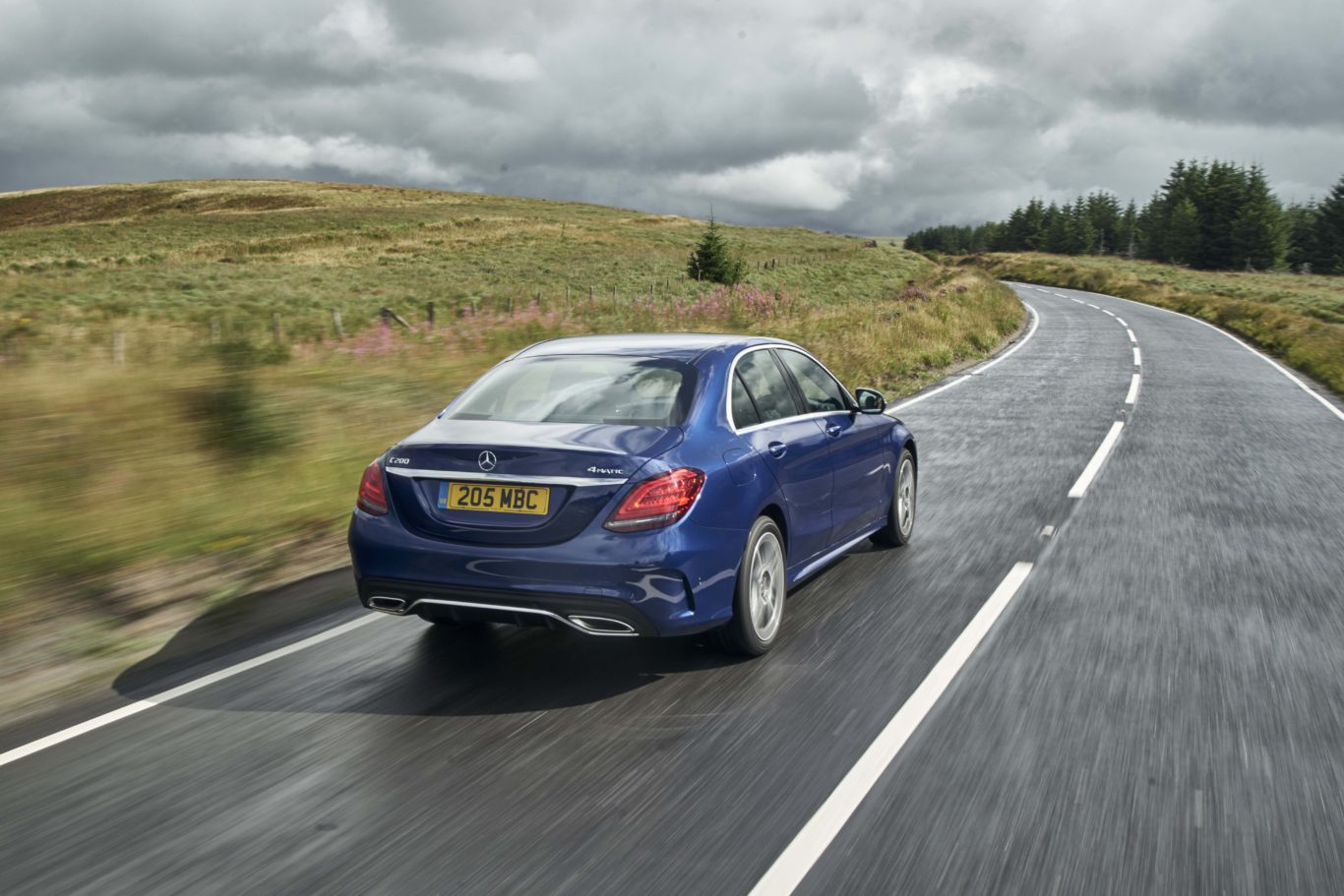
Then there’s EQ boost. This uses a 48-volt onboard power network with a belt-driven starter motor which can boost the car’s power output – it throws an extra 14bhp in the mix, in fact. It’s a system you’re likely to see applied to more Mercedes-Benz models moving forward.
What’s it like to drive?
The C-Class really needs to be able to handle all situations, be it a long motorway slog or a quick dart down a rutted b-road. Fortunately, it delivers in all areas. The ride is firm but well-damped, and the engine settles down to a distant thrum when you’re travelling on the motorway. The steering lacks any real feel – but we’ve come to expect this from new electric power racks – but it remains accurate, which allows you to easily place the car where you want it.

That new 1.5-litre engine does feel a touch underpowered for this size of car and is noisy under heavy acceleration. If you’re planning on frequent long journeys then we’d still look towards the diesel, despite the negative press oil-burners have been getting of late. That said, around town it feels quiet and refined.
How does it look?
The latest updates to the C-Class do make it into a much sharper-looking machine – though the original car was never much of an ugly duckling.
The new single bar grille gives it a purposeful appearance, while the overall effect of the AMG Line bodykit is to give the car just a little more presence and bring it closer to (in appearance terms) the full-blooded, high-performance AMG versions.
What’s it like inside?
The interior of the C-Class is now dominated by that widescreen infotainment system we’ve mentioned, and it does help to lift the overall look and feel of the cabin. There are some harsher plastics to be found – not something you’d expect for a car costing £39,415 – but the overall fit-and-finish feels good enough. The seats are supportive for long-distance driving, and the rear seats offer up a decent amount of legroom.
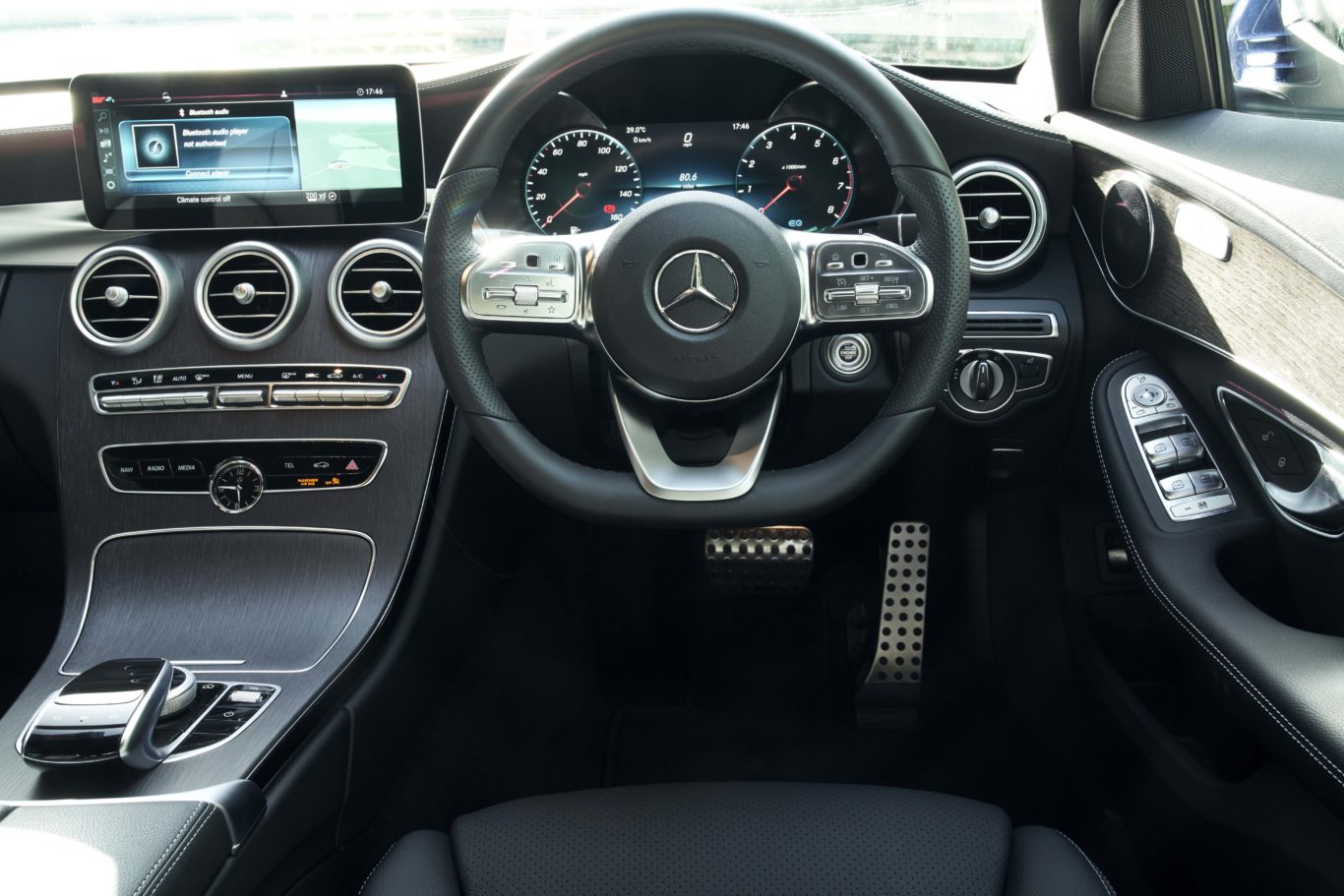
The large, thin pop-cover for the storage area ahead of the rotary infotainment controller remains flimsy, just as it did on the previous-generation car. It’s a trim piece that we’d gladly see removed, as it really does bring down the feel of the cabin.
What’s the spec like?
Prices for the C200 in AMG Line trim start at £35,405, and for that you get 18-inch five-spoke alloy wheels, parking sensors and a full connectivity package including smartphone connectivity and satellite navigation. Of course, AMG Line cars also get a full exterior sports bodykit as well as the nine-speed automatic gearbox (a must-have for long-journey drivers).
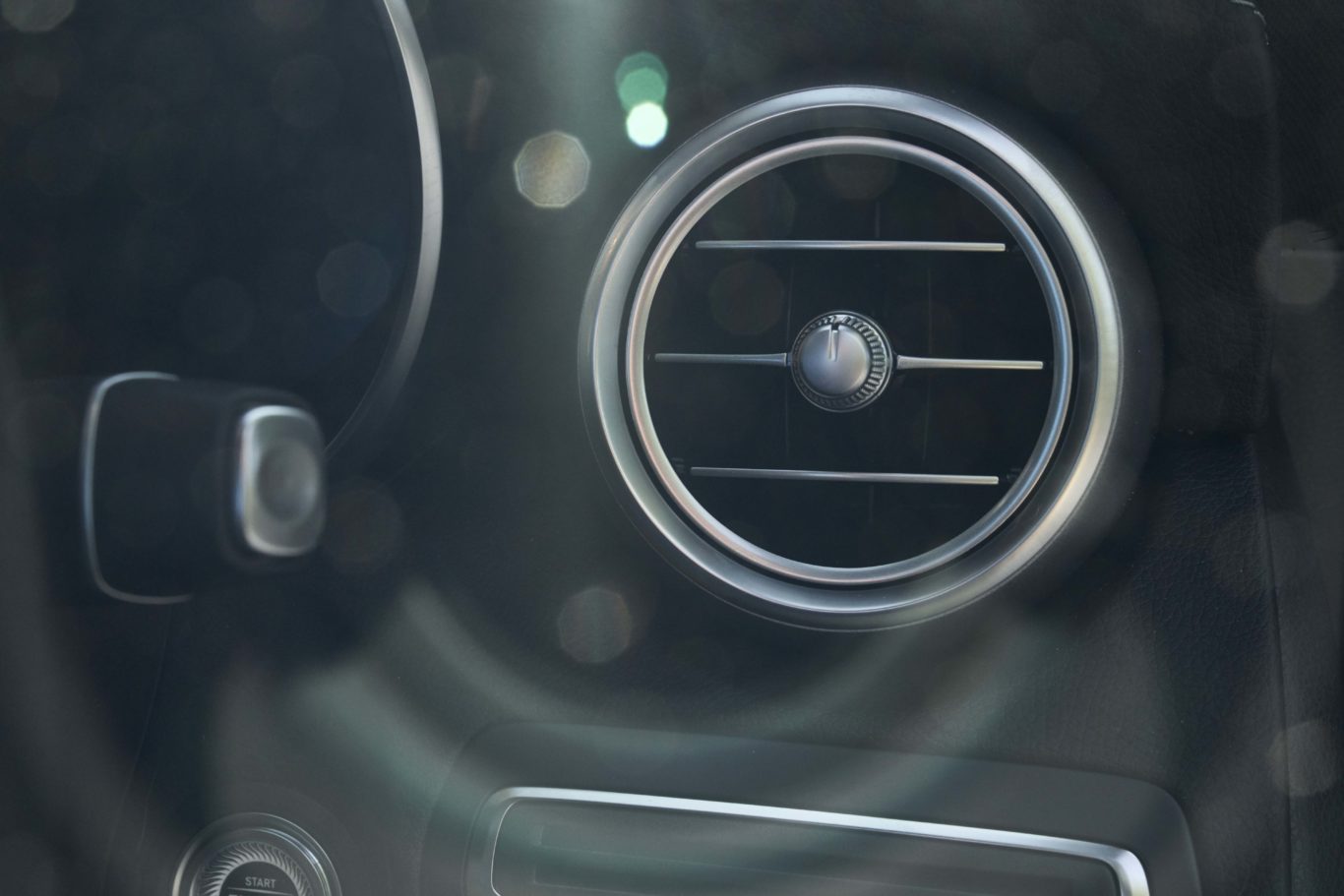
Our test car did feature a few optional extras, but in truth the base car is so well specified that these are quite few and far between. Open-pore grey oak trim brought a £195 premium, while an Artico leather dash cost £400. The costliest option was the ‘hyacinth’ red metallic exterior paint – a £895 extra. In total, our test car came in at £37,665 – so not a huge amount more than the base price.
Verdict
The C-Class does all of things that you’d want a premium saloon to do. It’s comfortable over long distances, feels special enough both inside and out and comes with plenty of standard equipment too. This C200 model doesn’t quite make as much sense as the diesel, particularly if you’re planning on longer journeys. We could understand if it offered rock-bottom emissions, but given that it emits more than a diesel while offering worse economy too, for now we’d recommend the oil-burner.


